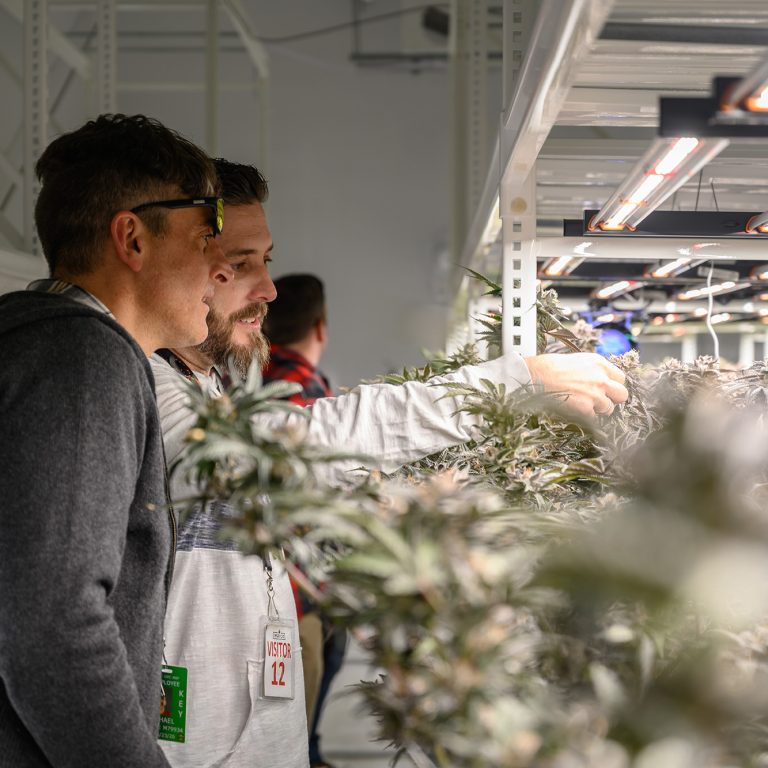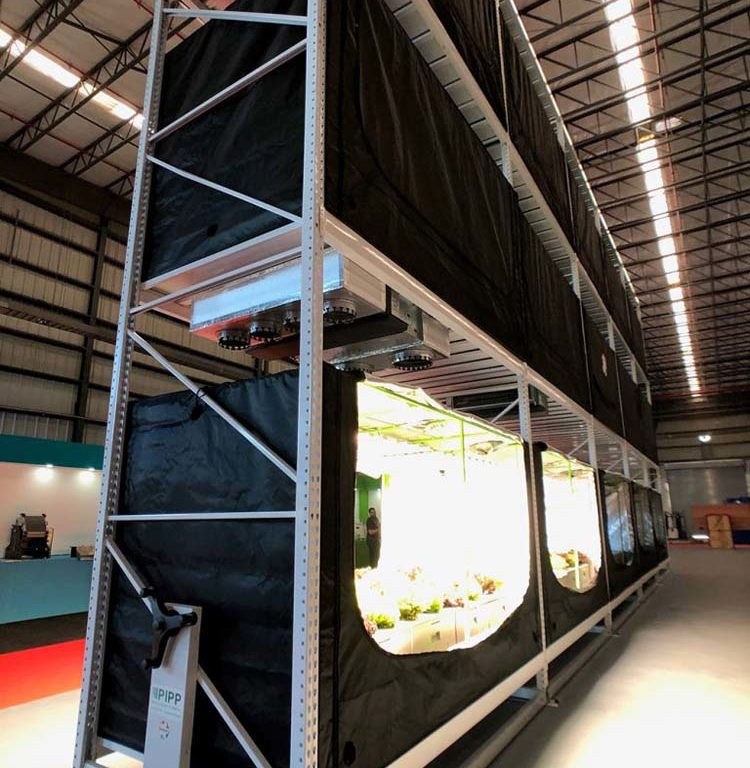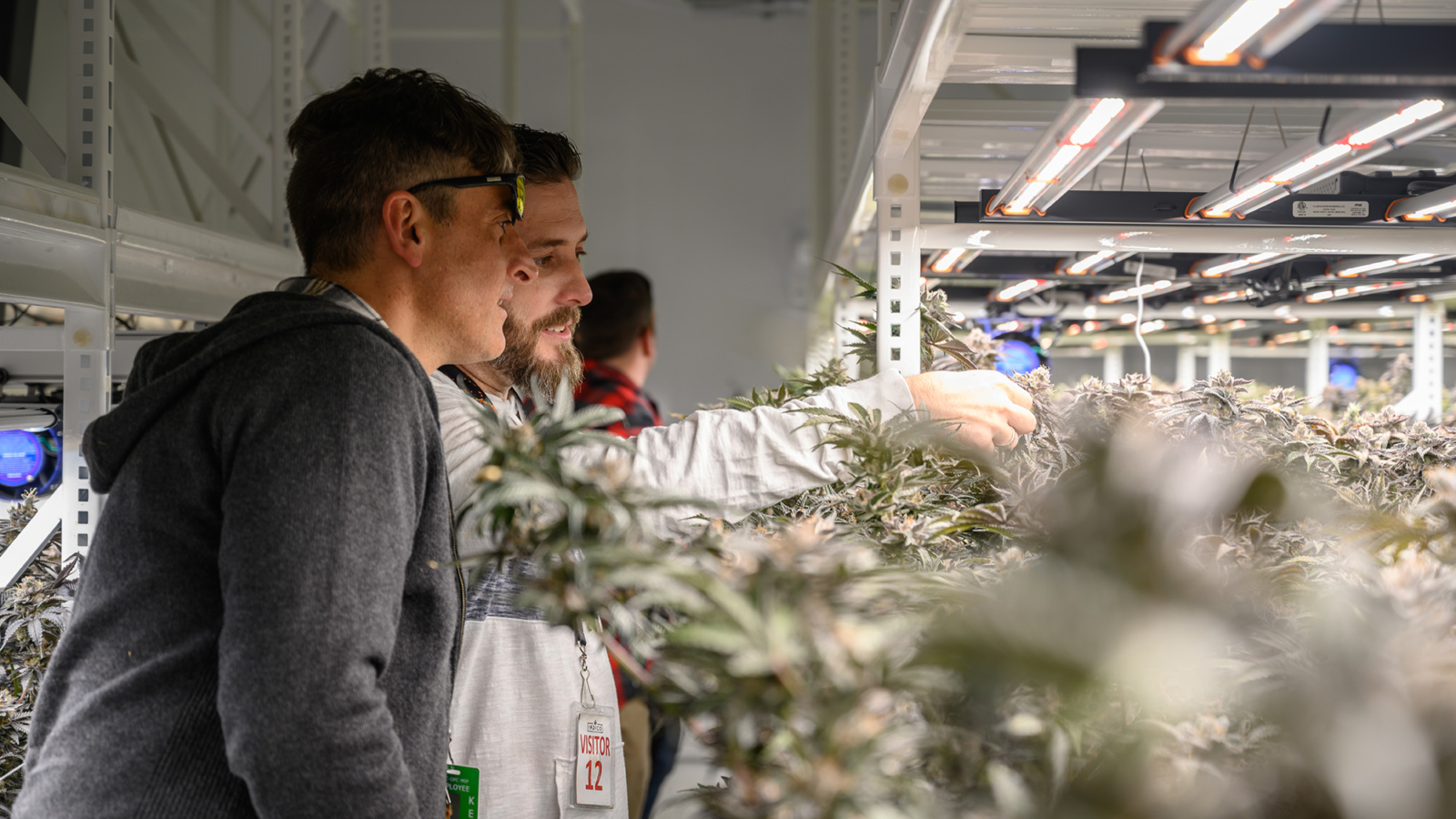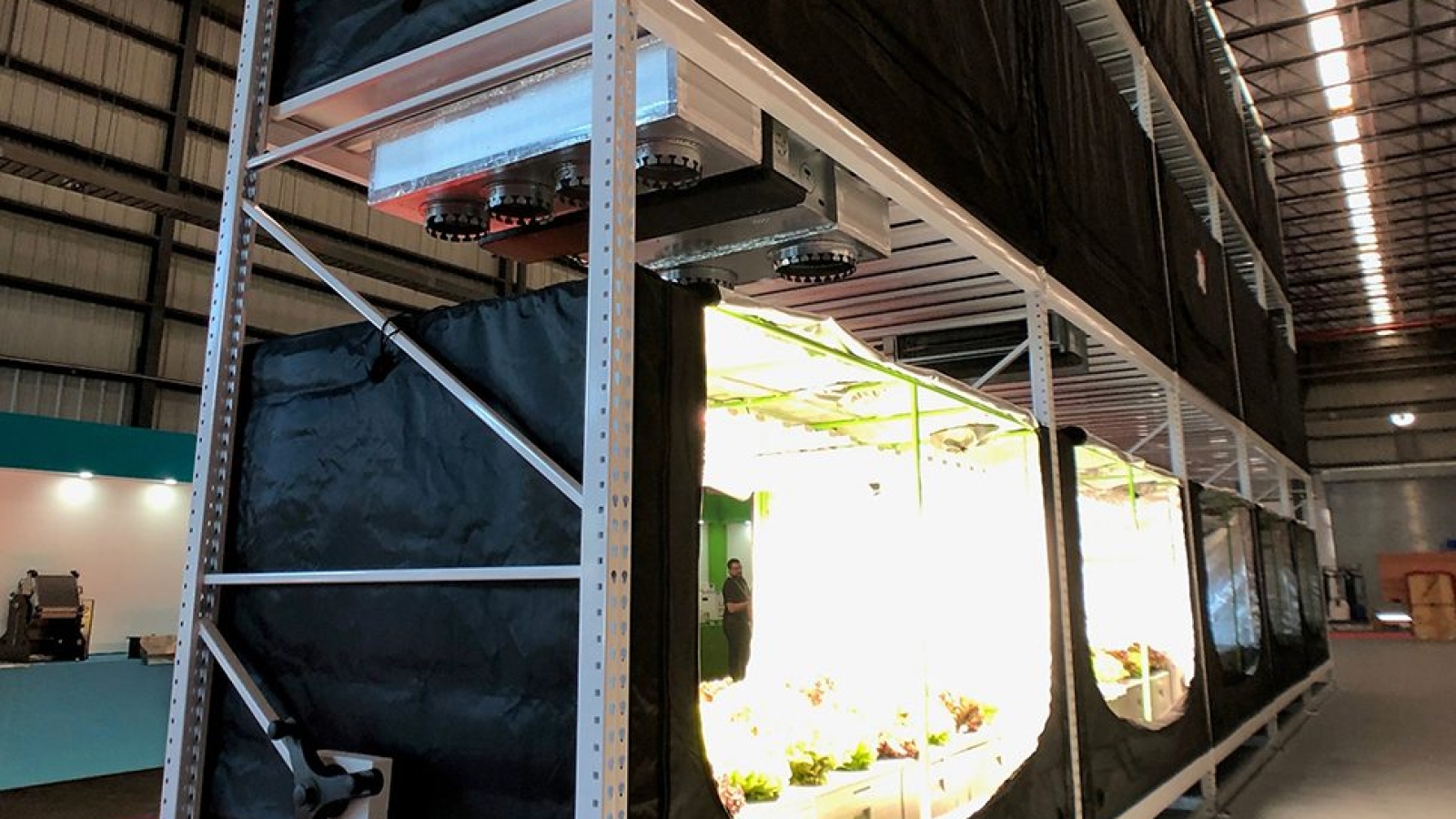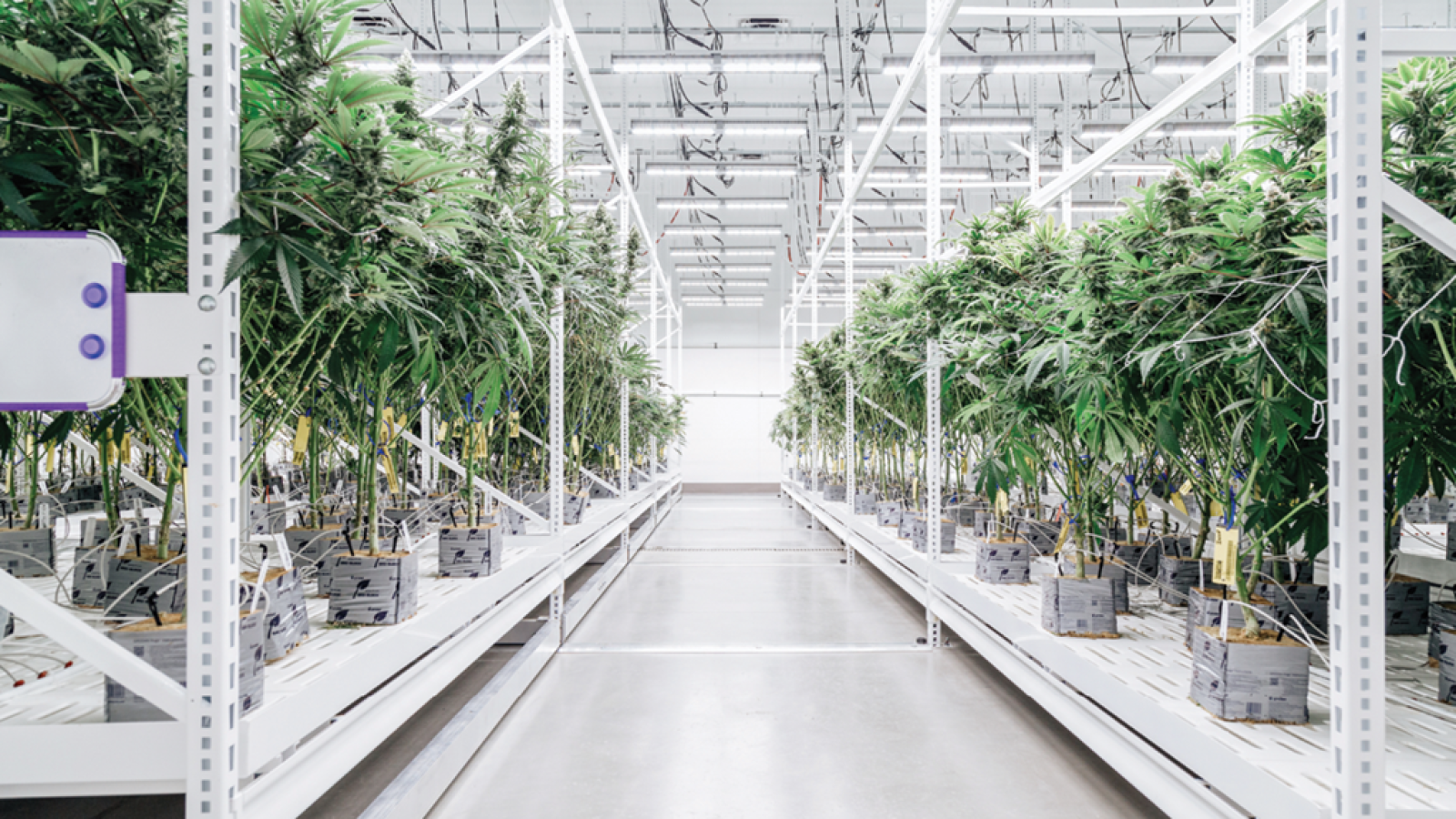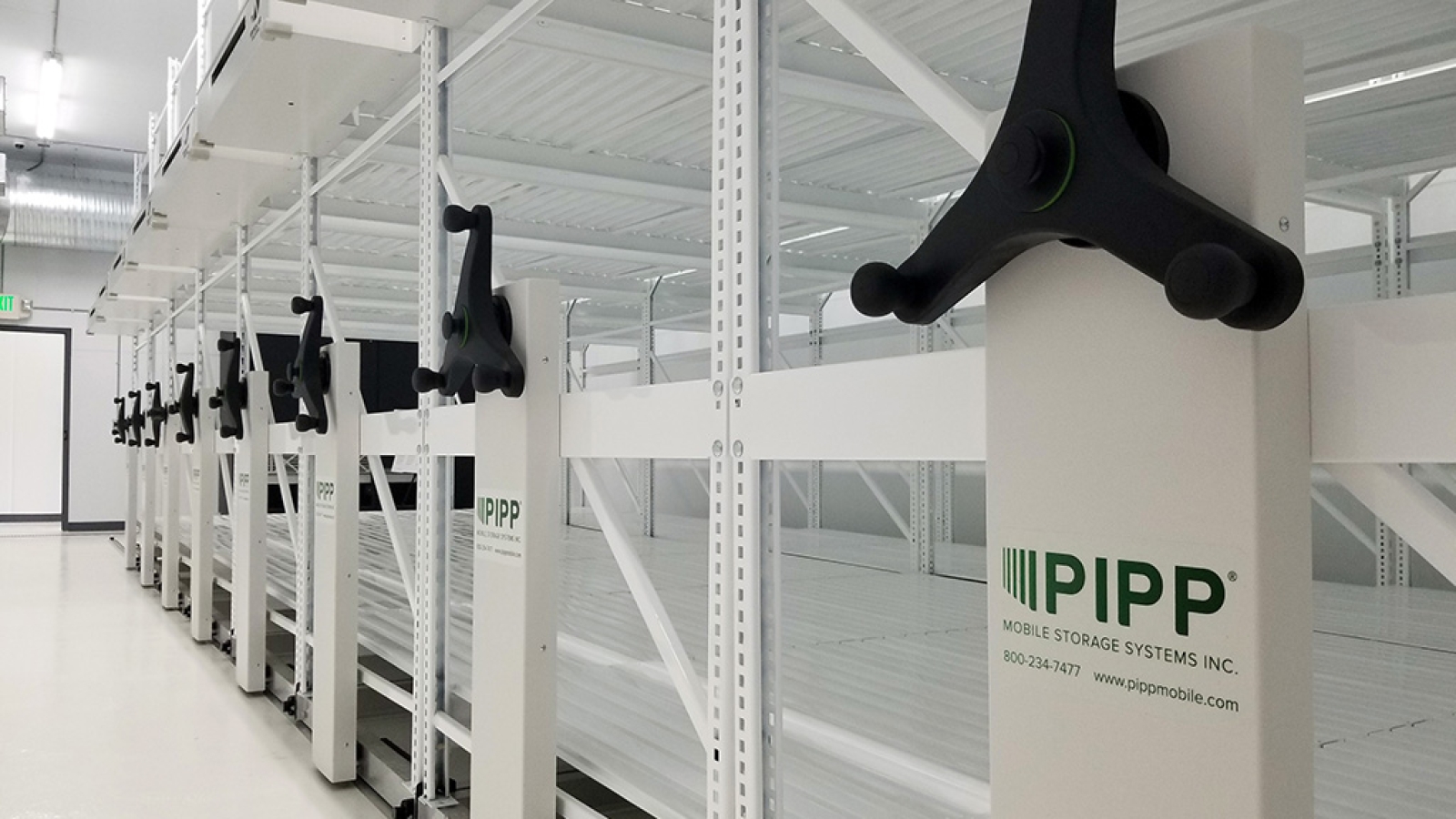Part I: Fixed Cost Absorption and Reduction
In the first of a three-part series, we explore how implementing
Pipp Horticulture mobile multi-level cultivation and space optimization systems can drastically
increase output, improve your bottom line and maximize your ROI. In an industry like cannabis, where fixed costs continue to rise, increasing the bottom line and improving efficiencies is essential to success.
Vertical applications throughout production facilities mean more than just an
increase in plant count; it is a calculated way to remain competitive in a capital-intensive industry.
Increasing Canopy Space, Without the Square Footage
Rent is on the rise in the cannabis space. Cultivators across the country are finding that the availability of properties to lease, especially warehouse space, have come into short supply in recent years. Furthermore, property owners are more reluctant to rent to cannabis tenants, due to the compounded risks and responsibilities they take on when doing so. The general rule-of-thumb for cannabis tenants has become paying
2-3 times the amount of rent that a “traditional” tenant would. Lynwood, a city in Los Angeles County, is a perfect example of this hike. In comparison to other cities in Los Angeles County, Lynwood’s cannabis taxes are significantly lower, making it desirable for many cannabis cultivators. Due to this high demand, industrial buildings which were renting for
$107-$120 per-square-foot in 2016 were going for over $300 for the same space in 2018. Cultivators implementing a
Pipp Horticulture mobile or vertical cultivation system have the upper hand when taking on a commercial lease.
Because vertical racking systems can maximize space throughout the operation, creative facility design can double or triple usable canopy space. Under these scenarios, businesses may forgo committing to a large warehouse space that they hope to grow into over time. Installing vertical racking in a cultivation facility allows for the
fixed cost of rent to be either smaller initially or absorbed quicker because of the advantage of producing more in the same existing space. Additionally,
cultivators have been mobilizing vertical racks which eliminate permanent or static aisles, further
optimizing and maximizing canopy space. Mobile racks allow for the creation of “floating” aisles that can be deployed when needed, to ensure all areas of the cultivation are accessible for an
efficient workflow. Lastly, several operators have used
vertical applications to allow the ease of scaling up when needed, by installing the infrastructure and initial levels, then when ready to expand, they simply add additional grow trays from
Greenhaus Industries. This strategy eliminates additional permitting and construction costs and delays.
State Obligations
Not only do state regulations dictate whether cultivators can operate indoors or outdoors, but some also impose a cap on the square footage a cultivator can allocate for vegetative and flower space. In recent years, cultivators have begun facing the burden of a “canopy tax,” imposed by cities and governments to increase their budgets from the cannabis industry. The tax, based on cultivation square footage, can be as much as several dollars a square foot. For those working under these mandates, implementing a
vertical application is the way to maximize that allotted space and remain competitive. In some states and municipalities, grow restrictions and taxes are based on square footage vs. canopy. In these cases, a vertical cultivation system can be utilized to increase productivity or reduce COGS. For those operating in states with plant count limitations, vertical racking is also beneficial. Not only does it maximize space, but it allows for
ease to scale up. Some states, such as New Mexico, allow for cultivators to apply to increase their plant limit, as market demands. When implementing a vertical cultivation system, the ability to
increase production is already in place and allows operators to do so with great ease and efficiency.
Lowering Energy Capacity and Needs
In cannabis cultivation, the
cost of energy is second only to labor. Not only is the ongoing cost of energy burdensome, but so are the initial expenditures. The capital expenditure for a cultivator to install lighting and HVAC can eat up a large part of the budget, and if calculated or installed incorrectly, can be even more costly and time-consuming for the cultivator. In addition to the cost of energy is the looming environmental footprint caused by the vast amount of energy required by a cultivation facility. Intensive energy loads put a strain on local communities, and some states have gone as far as imposing caps on energy consumption. Some cities have begun offering
incentive programs for energy efficient upgrades for indoor agriculture as well. Vertical racking systems paired with LEDs (to be explored in Part II of this series), can reduce the need for, and impact of, energy consumption by cultivators. Additionally, LEDs require significantly fewer kilowatts than standard high-pressure sodium (HPS) lighting does. Not only are kilowatt-hours used with the implementation of LEDs, but LEDs are also designed to emit less heat. Less heat means less heating, ventilation, and cooling (HVAC). If implementing vertical racking during the build-out phase of a cultivation facility, HVAC costs (per sq. ft of canopy) could be lower than if implementing a horizontal grow. Beyond the initial capital expenditure of installing an HVAC system, is the reduced monthly energy cost to run it. For those considering converting their horizontal grow space into a vertical one, amortizing costs over greater canopy space can significantly reduce COGS.
Mobile racking is “green” by design in various ways from utilizing recycled materials to allowing operators to
gain efficiency and
optimize capacity in a fixed footprint. Multi-level strategy
increases the potential viability of space that may not be suited or big enough to support single-level operations and allows operators to stay in spaces that typically are outgrown without space optimization. A smaller building also means fewer construction materials,
reducing energy consumption and costs.Increasing Yield, Increasing Bottom Line
Utilizing a
Pipp Horticulture mobile multi-level cultivation system throughout the facility offers an array of
benefits and options for cannabis cultivators. Lower initial capital expenditures on factors such as rent, combined with lower operational costs, are not the only desirable outcomes. Maximizing canopy space and the ability and ease to scale-up as needed give cultivators new-found security and growth potential in their operation and the industry as a whole. Implementing a vertical application allows cultivators to
remain competitive in an industry where
increasing efficiencies and
reducing expenditures is the way to win.
